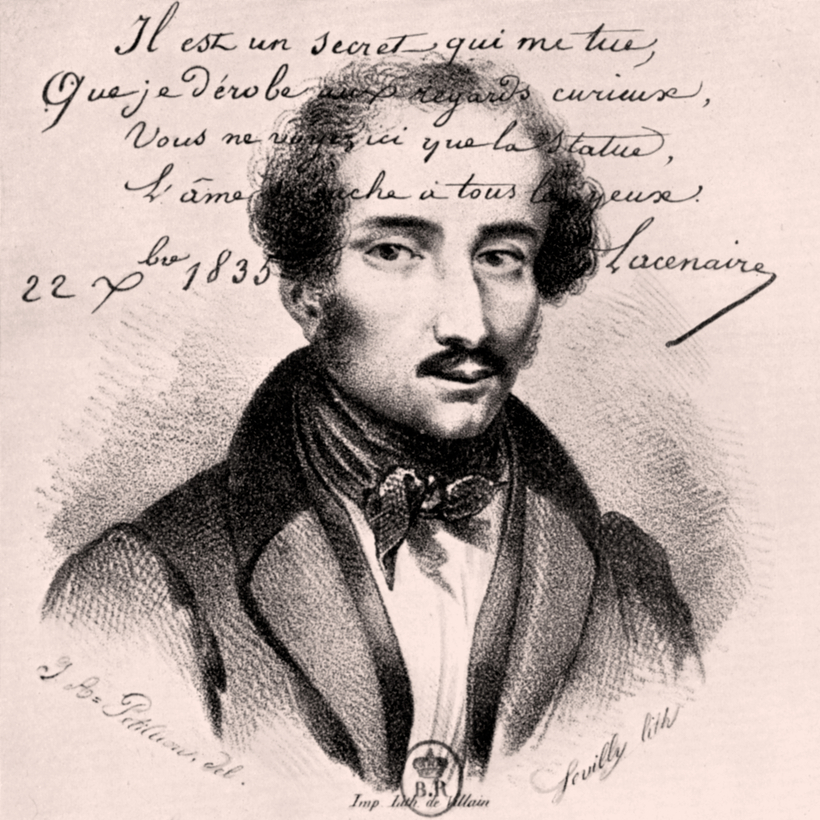First, let me explain how long I have been waiting for this book. In the proposal I prepared in the spring of 2016 for The Real Lolita, my first nonfiction work, about the true story that informed Nabokov’s classic, I mentioned The Sinner and the Saint as a possible comparison title. The real-life case that inspired Fyodor Dostoyevsky’s 1866 masterwork, Crime and Punishment, written by Kevin Birmingham, the same author who had, in 2014’s The Most Dangerous Book, delightfully chronicled the various obscenity trials and tribulations of James Joyce’s Ulysses? I was already sold. Thankfully, the long march to publication was well worth it.
The “real-life case” in question concerned the deeds of Pierre-François Lacenaire (the surname fittingly suggests larceny at its heart), a Parisian author, manipulator, and eventual murderer whose crimes, for which he was ultimately executed, scandalized the city in the mid-1830s—and caught the retrospective attention of Dostoyevsky, whose early literary success with his debut novel, Poor Folk (1846), had been pulverized by radical politics, imprisonment, hard labor, physical maladies, the agonizing deaths of loved ones, and a vicious gambling addiction that yoked him to writing as a means of naked survival. As he once wrote, “Yes, if it’s impossible to write I will die.”

Dostoyevsky was in a bind: he needed to write what was eventually published as The Gambler in order to satisfy crushing debts. But the morsel of a story about a young man driven to kill, and the aftermath of those brutal acts, kept growing into the serially published Crime and Punishment. Its publication was not exactly a redemption story for Dostoyevsky, but it led him out of one trench of darkness into the most creatively successful portion of his literary career.
Birmingham evokes Dostoyevsky’s life, struggles, and torment in rich, evocative prose, clearly drawing from many years of research and immersion in the author’s work, biography, and other primary sources. Describing Dostoyevsky’s return to St. Petersburg after 10 years in prison for criticizing Russian religion and politics, Birmingham writes: “He knew that the first sight of home would be like a scale telling the weight of what he had lost.” One feels the weight and brokenness of all that Dostoyevsky has endured, and how critical it was for him to find a way out, and forward.

The Lacenaire chapters don’t quite have the same emotional force. Perhaps it is because the double murder of a mother and son he instigated with two others was too brutal to be reconciled to any justifications Lacenaire later published. I couldn’t help but wonder if Birmingham hoped for more tangible connections between the real-life case and the novel, and while they are present, they are related with less interest than the chapters having to do with Crime and Punishment.
This is not altogether surprising—real-life murderers, even those with supposed intellectual bona fides such as Lacenaire, turn out to be depressingly common and banal. They are the least interesting figures in their own story, because no matter how much they attempt to explain why they took away the life of another (or several), they cannot overcome the totality of that loss, and the humanity of those who no longer exist.

Dostoyevsky’s fictive Raskolnikov can convey more emotional truths because of the curiosity and talent of his creator, who “had a compulsion not just to open a wound but to examine it,” Birmingham writes, “to probe it with his finger.”
A recent re-read of Crime and Punishment bolsters Birmingham’s assertion of the open wound: I had forgotten how visceral Dostoyevsky gets in describing Raskolnikov’s murders of Alyona Ivanova and especially that of her disabled younger sister, Lizaveta. Birmingham, however, never does, and so he creates a companion nonfiction volume that illuminates the novel in fresh and exciting ways.
Sarah Weinman is the author of The Real Lolita and the forthcoming Scoundrel: How a Convicted Murderer Persuaded the Women Who Loved Him, the Conservative Establishment, and the Courts to Set Him Free


